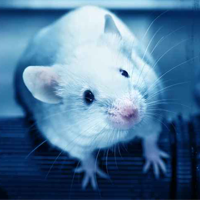Article
Study: Patterned Coding More Likely at Work in Transmitting Taste Signals
Author(s):
A Florida study suggests that taste qualities such as sweet, bitter, and salty are not encoded by separate neurons, known as labelled lines, but rather, are encoded "by activity in patterns of peripheral sensory neurons."

A Florida study suggests that taste qualities such as sweet, bitter, and salty are not encoded by separate neurons, known as labelled lines, but rather, are encoded “by activity in patterns of peripheral sensory neurons.” The mouse study was conducted by An Wu, of the graduate program in neurosciences at the Miller School of Medicine, University of Miami, and colleagues, and the results were published in Nature Communications on September 16, 2015.
Taste buds detect flavors, and information from the taste buds is transmitted to the brain through sensory afferent neurons. Some scientists believe that taste qualities are encoded by separate neurons, which are sometimes called labelled lines. This study, and some other previous research, suggests that labelled lines do not exist.
In order to investigate how taste is encoded and transmitted, the researchers imaged the geniculate ganglion, which transmits information from the taste buds to the brain, in mice. They first tested the reliability of their process for measuring taste-evoked signals, then tested different taste compounds and recorded responses to each of the five basic tastes (sweet, salty, bitter, sour, and umami).
Next, the researchers tested to see if the ganglion responded differently to increased concentrations of the tastes, and how well individual neurons were tuned to particular tastes. “Labelled line coding would predict that each neuron would respond only to one class of stimulus regardless of concentration,” they noted. Instead, the neurons responded differently to high and low concentrations of the various tastes. Only six, out of 61, responded in the same way to high and low concentrations of the same tastes. The researchers refer to those six as “specialists,” and the rest, which responded to two or more tastes, as “generalists.”
One observation related to the high and low concentrations of taste stimuli was that when presented with a low concentration, the majority of the neurons, 72%, appeared to be specialists. However, when the concentration was increased, all but the six specialists converted into generalists. These findings support the theory that pattern coding is more likely than labelled line coding.




